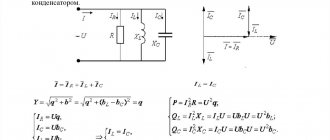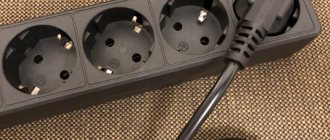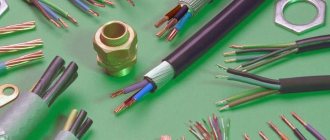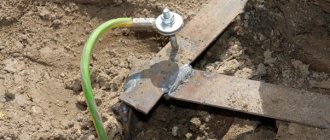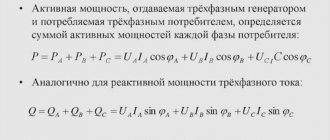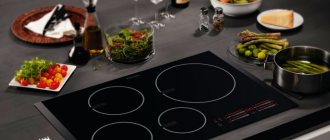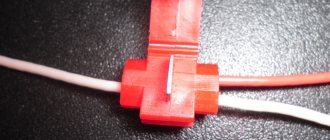Where and in what form to get energy resources
Use of solar panels
Traditional energy sources are thermal, nuclear and hydroelectric stations. Alternative energy supplies are self-renewing, efficient, cheap and environmentally friendly. In fact, energy is in natural resources, you just need to try to extract it. Without special skills, you can perform the following work:
- install solar collectors and batteries to power lighting or heat water;
- install wind generators;
- use heat pumps to heat a house using heat from water, earth or air;
- use biogas plants for processing animal, bird, and human waste.
The disadvantage of non-traditional energy sources is the large financial investments for their organization.
When may the need for alternative heating arise?
- The area on which the house is located is not connected to the gas mains.
- Gas supply is intermittent.
- The home owner wants to save on heating costs.
- Connection to the gas main is not possible due to the high cost.
Heating a house with alternative sources can be divided into two types:
- Equipment that works in addition to a gas boiler. It is not capable of fully providing the home with heat, so it is used to support the operation of the boiler during peak loads.
- Equipment that replaces a gas boiler. Generates sufficient heating power to warm the building.
Renewable Energy Sources
Wind generators on the roof of a private house
Due to the limited availability of fossil fuels, scientists around the world are developing and putting into operation energy sources of the future. Renewable ones include:
- Electricity generators - in Russia, electric, gasoline and gas are most often used. The latter runs on liquefied and natural fuels, due to its low noise level it is used in everyday life and is durable.
- Solar energy - a person uses electromagnetic radiation. The source of electricity and autonomous heating is silent and environmentally friendly.
- Wind turbines operate on the basis of the transformation of the kinetic energy of the wind into the mechanical rotation of a turbine that produces alternating current. Horizontal and vertical wind turbines are characterized by high efficiency.
- Biofuels - the best options would be oilseed fats, algae, gas from the fermentation of organic waste.
- Stations with a water wheel are a convenient source of energy if there is a river near the house. The turbine wheel is driven by water flows.
- Geothermal solutions – in seismically active areas, they convert the heat generated when geothermal water is released.
Russia has several solar stations - in the Orenburg region (capacity 40 MW), in the Republic of Bashkortostan (capacity 15 MW), in the Crimea (10 units, 20 MW each).
Unity of three environments
The most popular medium in this case is soil. The fact is that the earth is the unity of three media: solid, liquid and gaseous. Between small particles of minerals there are drops of water and air bubbles. Moreover, the elementary unit of soil - a micelle or clay-humus complex - is a complex system with a difference in potential.
A negative charge is formed on the outer shell of such a system, and a positive charge on the inner shell. The negatively charged shell of the micelle attracts positively charged ions in the medium. So electrical and electrochemical processes are constantly occurring in the soil. In a more homogeneous air and water environment, there are no such conditions for the concentration of electricity.
Application of solar energy
Connecting a solar battery to the home electrical network
Alternative electricity based on electromagnetic solar radiation is justified for people who have a dacha outside the city. The reason is that the total power in good weather is no more than 5-7 kW per hour. There are several solar installations that are popular today.
Solar panels
The devices are assembled from photoelectric converters. Industrial cells are constructed from minerals that produce current when exposed to direct light. In the private sector, poly- and monocrystalline silicon converters are popular. The latter have an efficiency of 13-25%, but polycrystalline ones are cheaper. The temperature range of the plates is from -40 to +50 degrees.
Solar collectors
Vacuum solar collectors
are used to heat air or water. The user can set the direction of the heated flows and organize a reserve in case of bad weather. Manufacturers produce three modifications of collectors - air, flat and tubular.
- Flat plastic. They are a black and transparent panel in one housing with a central copper coil. When exposed to sunlight, the lower dark element heats up. It transfers heat to the copper coil, which heats the water. The flat-plate collector is suitable for heating water in a swimming pool or outdoor shower. The downside of the technology is that heating large volumes requires many elements.
- Tubular. They look like vacuum or coaxial glass tubes. Water heated by the sun flows down them. The heat concentrated inside by a special system heats the water in the storage tank. Sediment is used to circulate water flows. A tubular collector is a good solution for heating hot water and heating.
- Airborne solar collectors. The devices resemble flat plastic models due to the black bottom and transparent top panel. Dimensional installations are located on the east or southeast wall. In them, due to solar heat, the air supplied to the house and utility rooms is heated by special fans.
Solar energy is best for underfloor heating.
Why extract electricity from the ground?
In order to generate electricity, you need to find a potential difference and a conductor. By connecting everything into a single flow, you can provide yourself with a constant source of electricity. However, in reality, taming the potential difference is not so simple.
Nature conducts enormous power of electricity through a liquid medium. These are lightning discharges, which are known to occur in air saturated with moisture. However, these are just single discharges, and not a constant flow of electricity.
Man took on the function of natural power and organized the movement of electricity through wires. However, this is just a transfer of one type of energy to another. Extracting electricity directly from the environment remains mainly at the level of scientific research, experiments in the category of entertaining physics and the creation of small low-power installations.
The easiest way to extract electricity is from a solid and moist environment.
Self-production of solar panels
Solar installations are an alternative to traditional electricity, which in finished form is expensive. If you assemble it yourself, you can reduce the cost of the structure by 3-4 times. Before you start creating a solar panel, you need to understand the principle of its functionality.
How does a solar power system work?
To imagine the principle of operation, it is worth starting with the design. The design of solar energy sources includes:
- solar panel - a complex of units for converting sunlight into an electron flow;
- Batteries – there are several of them in the system, the number depends on the power of the consumers;
- charge controller – ensures normal charging of the battery without overcharging;
- inverter - transforms low voltage current from batteries into high voltage current (3-5 kW is enough for a home).
The solar panels individually produce low voltage currents (about 18-21 V), which is enough to charge a 12 volt battery.
Creation of a solar battery
Materials for the manufacture of a solar panel
The battery is assembled from modular photocells. One household module contains 30, 36 and 72 elements. They are connected in series to a power source whose maximum voltage is 50 V.
For the body part you will need wooden beams, fiberboard, plexiglass and plywood. The bottom of the box is cut out of plywood and inserted into a frame made of 25 mm thick bars. Holes are made around the perimeter of the frame. To prevent overheating of the elements, the drilling step should be 15-20 cm.
For the bottom size, count the number of photocells and measure each one.
Assembling the solar panel
A fiberboard substrate with ventilation holes is cut out of the fiberboard using a utility knife. They are made according to a square-nested pattern with an indentation of 5 cm. Then:
- The elements are laid with their upper part on the substrate and soldered.
- Connections are made sequentially, in order.
- The finished rows are connected to busbars that conduct current.
- The elements are turned over and secured in place with silicone.
- Check the output voltage parameters. Its range is from 18 to 20 V.
- The battery is run in for 2-3 days to test the charging ability.
- At the end of the inspection, the joints are sealed.
Preparing the panel for installation
Paint and dry the substrate 2 times.
After checking the functionality, the solar panel is assembled:
- The input and output contacts are brought out.
- Cut out the plexiglass cover and fix it with self-tapping screws to the pre-drilled holes.
- When using a diode circuit of 36 diodes with a voltage of 12 V, remove the paint from the part with acetone.
- Holes are made in the plastic panel, diodes are inserted and soldered.
The final step is installation and orientation of the solar panel to facilitate maintenance access and energy efficiency.
Rules for installing a solar panel
Connecting a solar panel
Industrial modifications can rotate independently. Household devices must be set according to several parameters:
- Moving away from shaded areas - a tree or a tall building nearby will make the device ineffective.
- Orientation to the sunny side. Residents of the northern hemisphere orient the structure to the south, while residents of the southern hemisphere orient it to the north.
- The angle of inclination is tied to the geographical latitude of the site. In summer, it is better to tilt the solar panel 30 degrees to the horizon, in winter – 70 degrees.
- Availability of access for maintenance - removal of dust, dirt, and accumulated snow.
The device will be effective if the sun's rays are directed directly onto the lid.
How to get electricity from the ground
Since the soil contains both electricity and electrolytes, it can be considered not only as an environment for living organisms and a source of crops, but also as a mini power plant. In addition, our electrified homes concentrate in the environment around them the electricity that “drains” through grounding. You can't help but take advantage of this.
Most often, homeowners use the following methods to extract electricity from the soil located around the house.
Traditional sources
The most pressing question for owners of country houses and summer cottages will be the source of electricity (
Features of wind generators
Vertical wind generator
Wind power sources operate on the principle of converting kinetic energy into mechanical energy, and then into alternating current. Electricity can be obtained with a minimum wind speed of 2 m/s. The optimal wind speed is from 5 to 8 m/s.
Types of wind generators
There are modifications based on the type of rotor mounting:
- Horizontal - characterized by a minimum amount of materials for manufacturing and high efficiency. The disadvantages of the device are the high mounting mast and the complexity of the mechanical part.
- Vertical - work in a wide range of wind speeds. The specificity of the generator is the need for additional fixation of the motor.
Depending on the number of blades, there are single- or multi-bladed models. Based on the material, the blades are classified into sail and rigid. The helical pitch of the installation can be variable (you can set the operating speed) and fixed.
When constructing a wind turbine, a foundation must be created and strengthened.
Wind generator design
Wind generator design
A finished wind generator consists of the following parts:
- tower - placed in a windy area;
- blade generator;
- blade controller – converts alternating current to direct current;
- inverter – transforms direct current into alternating current;
- storage battery;
- water tank.
The storage battery smooths out the difference between the windy season and the calm period.
Making a low-speed wind generator from a machine generator
Creating a wind generator from a car generator
Since a kit for assembling a wind generator costs from 250 to 300 thousand rubles, it is advisable to make the design yourself. You will need a car generator and a battery.
The blades enable the operation of other windmill devices. You can make them yourself from fabric, metal or plastic pipe as follows:
- Choose a material with good wind resistance - a thickness of 4 cm.
- Calculate the length of the blade so that the diameter of the pipe is 1/5.
- Cut the pipe and use it as templates.
- Walk along the edges of all elements with sandpaper to remove any irregularities.
- Fix the plastic blades on the aluminum disk.
- Balance the wheel by fixing it in a horizontal position.
- Grind the edges of the wind wheel while rotating.
The optimal blade design is a large number, but a smaller size.
The mast must be reliable, strong and not sway.
The mast manufacturing project must begin with the choice of material. You will need a steel pipe 7 m long and 150-200 m in diameter. If there are obstacles, the wheel rises 1 m higher than them.
For additional stability of the structure, pegs for tensioning are made from steel or galvanized cable 6-8 mm thick. The mast and pegs need to be concreted.
The process of remaking an autogenerator consists of rewinding the starter assembly and creating a rotor based on neodymium magnets. Holes for them are drilled in the device. Magnets must be placed alternating poles and the voids must be filled with epoxy.
The rotor is wrapped in paper to rewind the coil in one direction using a three-phase circuit. At the last stage, the generator is tested - at 300 rpm it should show 30 V.
The more turns on the coil, the more efficient the generator is.
Alternative wind sources of heat and electrical energy are collected after manufacturing the rotary axis. You will need a pipe with two bearings and a tail section made of galvanized sheet 1.2 mm thick.
The generator is attached to the mast by means of a professional pipe frame. The distance from the beam to the blades must be more than 25 cm. After assembling the basic structure, the charge controller, inverter and battery are installed.
Homemade hydroelectric power station
If there is a stream or reservoir with a dam on the site, a homemade hydroelectric power station will become an additional source of alternative electricity. The device is based on a water wheel, and the power will depend on the speed of the water flow. The materials for making a generator and wheels can be taken from a car, and scraps of corner and metal can be found in any household. In addition, you will need a piece of copper wire, plywood, polystyrene resin and neodymium magnets.
Homemade hydroelectric power station
Sequence of work:
- The wheel is made from 11 inch rims. The blades are made from a steel pipe (we cut the pipe lengthwise into 4 parts). 16 blades will be required. The discs are bolted together, the gap between them is 10 inches. The blades are welded.
- The nozzle is made according to the width of the wheel. It is made from scrap metal, bent to size and joined by welding. The nozzle is adjusted in height. This will allow you to adjust the water flow.
- The axle is welded.
- The wheel is installed on the axle.
- The winding is made, the coils are filled with resin - the stator is ready. We assemble the generator. A template is made from plywood. Install magnets.
- The generator is protected by a metal wing from water splashes.
- The wheel, axle and fasteners with nozzle are coated with paint to protect the metal from corrosion and for aesthetic pleasure.
- By adjusting the nozzle, maximum power is achieved.
Homemade devices do not require large capital investments and produce energy for free. If you combine several types of alternative sources, then such a step will significantly reduce energy costs. To assemble the unit you will only need skillful hands and a clear head.
Heating a home using heat pumps
Heating with heat pumps
Europe has been using heat pumps for several years, interacting with all alternative types of electricity. In summer and winter, the installations take heat from the soil, air, water and direct it to heat the room.
Types of heat pumps
Depending on heating needs, you can select models with 1, 2, 3 circuits, 1-2 capacitors. They will work for heating and cooling or exclusively for heating.
Depending on the type of energy source and method of generating electricity, devices are:
- Air-water. Heat flows are taken from the air and heat the water. The systems are suitable for climate zones with winter temperatures of -15 degrees.
- Earth-water. Relevant for temperate climate zones. They are installed in the ground using a collector or probe without drilling permits.
- Water-water. Installed near bodies of water. In winter, the pump provides heat to a large house by heating the source.
- Water-air. The source of energy is a body of water. Heat flows are released into the air using a compressor. It becomes a coolant.
- Earth-air. The soil is a source of heat, which is transferred to the air by a compressor. The energy carrier is antifreeze liquids.
- Air-to-air. The devices operate on the principle of an air conditioner - cooling and heating.
The choice of heat source depends on the geology of the area and the presence of obstacles to earthworks.
How does a heat pump work?
The heat pump operates on the basis of the Carnot cycle - an increase in temperature with a sharp compression of the coolant. Since the devices have 3 operating circuits (2 external, 1 internal), a condenser, an evaporator and a compressor, their operation diagram can be represented as follows:
- The primary coolant (located in water, in air, in the ground) takes heat from sources with low potentials. The maximum temperature of the node is about + 6 degrees.
- The low-temperature low-temperature media is located in the internal circuit. When heated, the refrigerant evaporates and its vapor is compressed in the compressor. At this moment heat is released. Vapor temperature – from +35 to +65 degrees.
- The heat in the condenser enters the coolant from the heating circuit. The vapor becomes condensate and is sent to the evaporator.
The heat pump cycle is constantly repeated.
Heat pump from scrap materials
Homemade heat pump
Homemade is quite possible if you have working parts from household appliances.
To prepare the condenser and compressor you will need:
- Make a pump compressor from a refrigerator or air conditioner compressor. The part is fixed with a soft suspension on the wall of the boiler room.
- Make a capacitor. The best option is a 100 liter stainless steel tank.
- Cut the container in half with a grinder, and then insert the coil (copper tube of the refrigerator or air conditioner).
- After installing the coil, weld the tank halves.
For a high-quality seam, use argon welding.
A heat pump requires two wells
The evaporator is made on the basis of a 75-80 liter plastic tank with a coil made of copper pipe ¾ inches in diameter. It is wrapped around a steel pipe 300-400 mm in diameter. The coils are fixed with a perforated angle.
A thread is cut on the coil for coupling with the pipeline. Refrigerant is pumped into the unit, after which the evaporator is mounted on the wall.
The optimal source for these alternative methods of generating heat and electricity will be water from a well or well. The liquid does not freeze even in winter.
You will need 2 wells:
- for collecting water and supplying it to the evaporator;
- to discharge waste water and send it to the evaporator.
The autonomy of the heat pump will be ensured by automatic mechanisms for controlling the movement of coolant along the heating circuits and freon pressure.
Receiving heat from other alternative sources
External circuit of the direct heat exchange system
When organizing the first external circuit of the pump, you will need an effective heat source:
- Ring-shaped pipes in water. A reservoir without a large freezing depth or a river ensures the effectiveness of the technology. Pipes are laid under water using a weight.
- Thermal fields. The pipes are buried below the freezing point of the soil - a large layer of soil is removed.
- Geothermal springs. Wells are drilled to great depths. Circuits with coolants are installed in them.
- Outside air. Heat is extracted from ventilation shafts or ventilation ducts.
The disadvantage of a heat pump is the high cost and installation costs of heat sources.
Does objective reality not exist?
To create two alternate realities in the laboratory, the researchers used six entangled photons. One reality represented Wigner's reality, the other represented the reality of his friend. Wigner's friend measured the polarization of the photon and stored the result, after which Wigner himself performed an interference measurement to determine whether the measurement and the photon were in superposition.
The results obtained by the team of scientists were mixed. It turned out that both realities can coexist, even if they lead to irreconcilable results - just as Eugene Wigner predicted. But can they be reconciled?
The discovery of Scottish scientists is noteworthy for its complexity, since for the first time a thought experiment of this kind could be tested in laboratory conditions.
The idea that observers can ultimately agree on their measurements of some fundamental reality is based on several assumptions.
First, universal facts do exist and observers can agree on them.
Second, the choice one observer makes does not affect the choices other observers make—an assumption physicists call locality. So if there is an objective reality that everyone can agree on, then all of these assumptions are valid.
But the results of the work of scientists from Heriot-Watt University, published in the journal Science Advances, indicate that objective reality does not exist. In other words, the experiment assumes that one or more of the assumptions—the idea that there is a reality that we can agree upon, the idea that we have free will, or the idea of locality—must be wrong.
“The scientific method relies on universally agreed upon facts established through repeated measurements, regardless of who made the observations,” the researchers write in their paper.
I don't know about you, but my head is spinning because these results provide real evidence that when it comes to the field of quantum physics, there can be no such thing as objective reality.
Biogas plants
Organic alternative electricity is produced using biogas systems. The devices allow you to process poultry and animal waste. The resulting gas undergoes purification and drying, and is then used as a coolant. Residual masses will be an effective and safe fertilizer for the soil.
Principle of technology
Gases are formed during the fermentation of biological waste of animals and birds. An anaerobic environment without access to oxygen will be optimal. It increases the activity of mesophilic and thermophilic bacteria. For the process to be effective, the mass will need to be mixed by hand, using a stick or mechanical stirrers. Under ideal conditions, 1 liter of a closed container heated to a temperature of +50 degrees produces from 4 to 4.5 liters of gas.
Biogas system for a private home
The simplest biogas plant
The simplest bioreactor is a container with a lid and a mixing mechanism. A hole is made in the lid for the gas exhaust hose. Its quantity will be enough for 1-2 burners.
An underground or above-ground bunker increases the usable volume. The underground structure is made of reinforced concrete with a top layer of thermal insulation. The container is divided into compartments. Manure is loaded into the conveyor, filling the bunker to 80-85%. The remaining area is used for gas accumulation. It is discharged through a special tube, the second end of which is located in a water seal. After drying, the purified gas enters the house.
Alternative types of heat and electricity production are currently not available to apartment residents. They can be used by residents of private houses and farms. The only drawback of renewable sources is the cost of setting up the system, but the financial investment pays off after 1-2 years of operation.
Wigner's friend paradox
In 1961, Nobel Prize winner in physics Eugene Wigner seriously asked the question of what objective reality is. The scientist proposed one of the strangest experiments in quantum mechanics, which involved the idea that two people could observe two different realities and neither would technically be wrong. But how?
In a thought experiment called Wigner's Friend Paradox, two scientists in a laboratory study the photon, the smallest quantitative unit of light. It is noteworthy that this polarized photon, when measured, can have either horizontal polarization or vertical polarization. But before measurement, according to the laws of quantum mechanics, the photon exists in both polarization states simultaneously - in the so-called superposition.
So Wigner imagined his friend in another laboratory measuring the state of this photon and remembering the result, while Wigner himself watched from afar. At the same time, Wigner does not have any information about his friend’s measurement, and therefore he is forced to assume that the photon and its measurement are in a superposition of all possible results of the experiment.
Before measurement, the photon is in a superposition, that is, in two states at the same time.
But this is in sharp contrast to the point of view of Wigner's friend, who actually measured the polarization of a photon and recorded it! A friend might even call Wigner and tell him that a measurement has been made (as long as the result is not revealed). Thus, we get two realities that contradict each other, which calls into question the objective status of the facts established by the two observers.
It is noteworthy that until 2022 - until Swedish scientists conducted the same experiment in the laboratory - Wigner's friend's paradox was exclusively a thought experiment. Just like the world famous experiment proposed by the Austrian theoretical physicist Edwin Schrödinger.
Lighting using a gasoline generator
Instead of a wind generator, you can use a gasoline or diesel generator to create autonomous garage lighting.
Gasoline generator
It is rational to use a gasoline generator only when problems with electricity are rare and the lights are turned off for a short period of time. It is also rational to purchase it if you often use power tools in the garage.
Autonomous garage lighting and methods for its implementation
In a garage, autonomous lighting is necessary in a situation where there is no electricity in the area or there are frequent interruptions. Therefore, to ensure that there is always light in the garage, many car owners install autonomous lighting.
Note! In the garage, you can organize two types of lighting: from a 220-volt power supply and autonomous lighting. In this case, autonomous lighting in this situation will already be called emergency lighting. But this approach is relevant only when the main lighting has already been done earlier, and problems with it appeared relatively recently.
Garage lighting
Today there are many ways to make autonomous garage lighting with your own hands. The most popular among car owners are the following ways to organize light in a garage without electricity:
- placement of solar panels;
- installation of a wind generator;
- purchase of a gasoline generator;
- battery usage;
- garden lamp;
- Philippine lantern.
For a better understanding, let's look at each lighting method in more detail.
Method 3 - Potential between roof and ground
3. A fairly large potential difference can be created between the roof of the house and the ground. If the surface on the roof is metal and the surface in the ground is ferrite, then you can achieve a potential difference of 3 V. This figure can be increased by changing the size of the plates, as well as the distance between them.
It is legal?
Yes, the power grid is not punished for this, since we will not use the phase. And in fact this is not theft.
Will electric meters take this energy into account?
It all depends on the type of electricity meter. There are meters with one shunt (with one measuring element) - the most common and two-shunt (with two measuring elements). One shunt I just don’t take into account zero - since their measuring shunt is located on the phase.
How much electricity can you get?
It all depends on the number of subscribers in the network and the power of all wiring. Usually it's somewhere between 3-10 volts. If you connect a step-up transformer, you can light an LED lamp. The voltage after the step-up transformer is about 100-220 V.
Scheme
Any transformer from a radio, tape recorder, etc. It is advisable to use a low voltage of 3-9 Volts on the secondary winding. Please note that you use all manipulations at your own peril and risk.
What can you try?
But you should be careful, since some of the proposed options are created solely as commercial advertising and are not useful even from a theoretical point of view. Such methods are intended to sell non-working devices to gullible applicants for free voltage.
However, there are experiments that make it possible to extract electricity, albeit at a relatively low voltage. Among the existing methods of generating electricity from the ground, we will consider several truly working options.
Scheme according to Belousov
The name of the method comes from the name of the scientist who proposed this method of generating electricity from the earth. For this, double passive grounding without any activators, two capacitors and inductors are used. Belousov's scheme is shown in the figure below:
Rice. 1. Scheme for generating electricity according to Belousov
The extraction of electricity from the ground will occur according to the following principle:
- High-frequency discharges present in the soil are constantly passed through a circuit of two groundings. But they will be filtered out by the inductive component of the first coil of the Tr.1 circuit.
- The capacitors in the circuit are connected by positive plates to each other; it is important to follow this sequence, otherwise the accumulation of electricity, as in a single capacitance, will not occur.
- A light bulb is connected to the second coil, which, if electricity is available, will show that you have managed to generate current. This is a kind of load that you can replace with any device.

